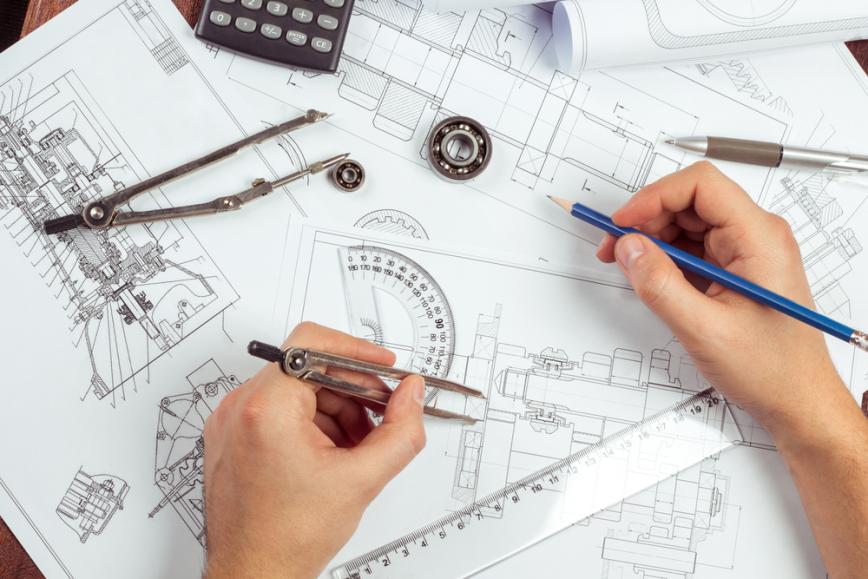Business English Vocabulary: Engineering
Engineering is an important, specialized, and in-demand profession. For those interested in a career in engineering, let’s start with a few important bits of English engineering vocabulary.
Generally speaking, engineering can be understood as the application of concepts, theories, and real-world knowledge to design something or maintain something. There are many, many types of engineers, but here are some popular examples:
Biomedical engineers
Use the design mindset of engineering combined with biological and medical sciences to work with and improve healthcare.
Electrical engineers
Work with electricity and electronic systems. Although electronic engineers work across all forms of engineering, they are often talked of separately because of their complicated skill set.
Environmental engineers
Work with the natural environment, trying to provide healthy water, air, and land for animals and humankind alike.
Civil engineers
Design and oversee public works such as roads, bridges, canals, etc.
Mechanical engineers
Develop and maintain machinery.

Hand-picked related content: 5 WAYS TO PROGRESS YOUR INTERNATIONAL CAREER
Here are some other words that might be useful:
Budget
A budget is an important factor in everything that an engineer designs. The budget, is the amount of money you are able to spend on something. You might have a budget when you go shopping for groceries, a government has a budget when it plans its projects for the year, and engineers have a budget to work with when designing a solution.
CAD (Computer-Aided Design)
CAD (pronounced as one word, “kad”), stands for Computer-Aided Design, and, as the name suggests, describes the practice of using computers to help with a design, a cheaper and more useful alternative than making drawings or models by hand. CAD is often used as an adjective: a CAD drawing, a CAD model, etc.
Code
A code is a law, regulation, or understanding that specify minimum standards to ensure the safety and wellbeing of everyone involved. Buildings must be “to code,” for example, which means that they meet minimum safety standards decided by regulating authorities to make sure that people near the building are safe. You might also talk about ethical or moral codes.
Constraint
A constraint is a limitation or restriction on a design, something that the engineer must consider while making his design. Budget, for example, is a very important constraint on all projects, as all designs must be realistic regarding the amount of money that is available.
Design
To design something is to prepare the first ideas and plans for something, or to come up with a specific solution for the purpose you have in mind. Once you have designed something, you now have a design that you will use.
Iterative Design
Iterative design is the cycling process of design used by engineers. The process begins with an initial trial prototype, which is then tested. The test results are analyzed, and adjustments are made. After these adjustments, a new prototype is created, and the process continues until a satisfactory product is made and produced on a large scale.
Model
A model is way of showing the way something is made or constructed. In modern times, modeling is often done on computers with CAD systems, as these models are cheaper and easy to work with, change, and analyze.
Prototype
The prototype is the original version of something before the final is produced. In the iterative design process, a prototype is created and tested until a satisfactory final design is found.
Research and Development (R&D)
Often shortened to R&D (pronounced “R and D”), Research and Development is the general term for investigations and experiments to either try to develop a new product or improve an existing ones. You might say that a particular project is “still in R&D.”

Scale
Scale is an important concept when building models. To ensure that the model will accurately represent the real thing, it is important that the size, shape, etc. are all in the same proportion as the design, or, in other words, "to scale." Large projects such as a building might be modeled at a very small scale, such as 1:100 (read “1 to 100”), whereas very small and complicated parts might be enlarged to be more easily understood.
Standard
A standard is a document or idea defining the required characteristics of a particular product, for example with regards to size and dimensions, performance needs, ethics, and safety.
Schematic
A schematic is similar to a model in that it helps to visualize a product or system, but is different in that it uses abstract symbols instead of realistic representations. A non-engineering example of schematic might be a subway map, which shows the layout of different subway routes with dots and lines that don’t actually match the physical arrangements of the tracks, but instead help to visualize how the subway lines connect. Schematics are particularly useful in electrical engineering.
If you’d really like to improve your skills, consider studying English abroad at one of our language schools all over the world.
Any other engineering-related questions? Let us know in the comments!




